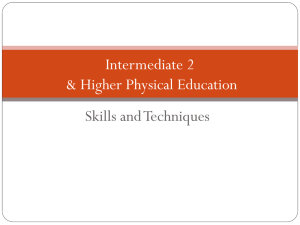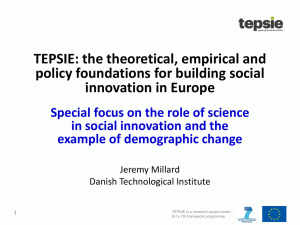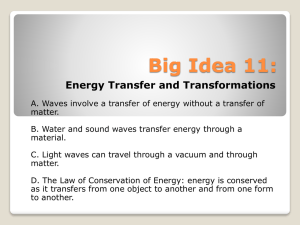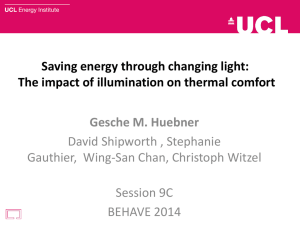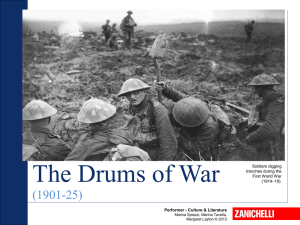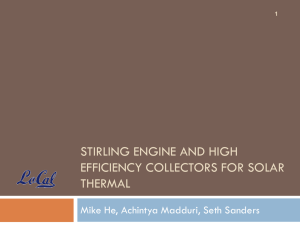Short methodologies for in-situ assessment of the intrinsic thermal
advertisement
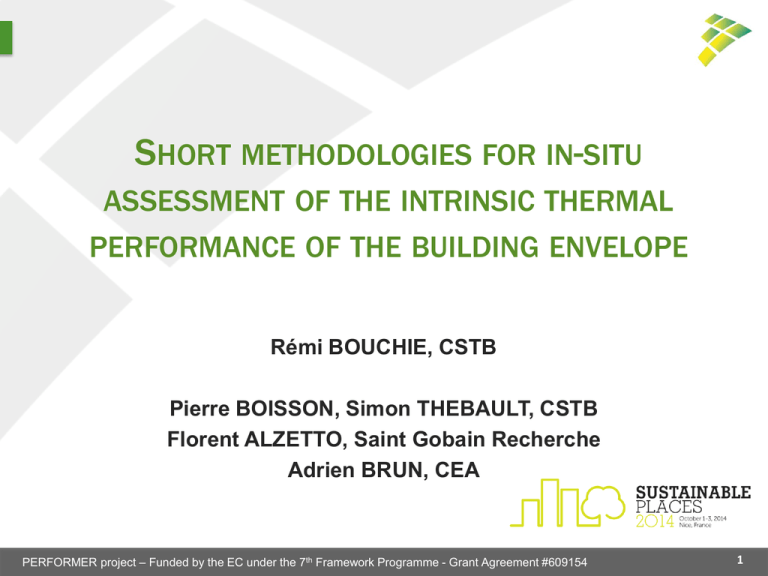
SHORT METHODOLOGIES FOR IN-SITU ASSESSMENT OF THE INTRINSIC THERMAL PERFORMANCE OF THE BUILDING ENVELOPE Rémi BOUCHIE, CSTB Pierre BOISSON, Simon THEBAULT, CSTB Florent ALZETTO, Saint Gobain Recherche Adrien BRUN, CEA PERFORMER project – Funded by the EC under the 7th Framework Programme - Grant Agreement #609154 1 PERFORMER PROJECT ■ Founded by the 7th Framework Program of the European Union (project cost 8,5 M€) ■ Aims : ■ To develop a comprehensive energy performance assessment framework for buildings ■ To develop innovative methodologies ■ To develop innovative tools (ICT tools, software…) ■ Major European companies and research centers implicated: ■ Reducing to gap between expected and actual energy performance of buildings ■ A part of the gap is determined by intrinsic performance of the building envelope (workmanship quality), a specific task of PERFORMER Project is dedicated to find methods to measure in situ the thermal performance of a constructed envelope. PERFORMER project – Funded by the EC under the 7th Framework Programme - Grant Agreement #609154 2 NEED FOR INNOVATIVE METHODS ■ Methods with occupancy ■ ■ ■ ■ Energy signature methods : The “signature” include ventilation Occupant behaviour (i.e. windows opening) Solar gains ? Other energy uses (hot water) ? ■ Methods with no occupancy ■ Most studied: the co-heating test = “optimised” energy signature method (no occupancy, no ventilation, just heat consumption, method for solar gains…) ■ Good accuracy but practical problems: ■ Applicable in cold climate/season (not in summer) ■ Need about a month with no occupancy in the tested building ■ Need for innovative methods to reduce time duration for the test, development of “short” measurement methods (< 10 days max) PERFORMER project – Funded by the EC under the 7th Framework Programme - Grant Agreement #609154 3 ISABELE METHOD Tested building ■ Optimisation protocol: Tint mes External solicitations (measured) Heating power injected (controlled and measured) ≠ to minimize Tint calc Thermal modeling (RT 2012) ■ Temperature difference minimized by adjusting: ■ Thermal loss through the envelope (insulation + air infiltration) ■ Dynamic parameters (energy stored of the thermal mass) ■ The “best” thermal loss coefficient HLC (W/K) obtained when measured and calculated internal temperature are the closest possible PERFORMER project – Funded by the EC under the 7th Framework Programme - Grant Agreement #609154 4 QUB METHOD Objective : Measure the whole building heat loss in one night The simplest building model P(t) R TEXT TIN C 𝑃 = 𝐾0 𝑇𝐼𝑁 − 𝑇𝐸𝑋𝑇 Loss by transmission and infiltration ∆𝑇𝐼𝑁 +𝐶 ∆𝑡 Internal mass storage ■ Done during the night and without occupancy to avoid non measured additional power 5 INCAS PLATFORM ■ 88 m2 two-story individual house ■ Roller blind closed to avoid radiations ■ Temperature and energy consumption monitoring ■ Use of in-house heating and ventilation system ■ Electrical resistance on terminal part of the airflow network ■ Limited ventilation losses using heat recovery system on exhausted air PERFORMER project - 7th Framework Programme - Grant Agreement #609154 6 MAIN RESULTS ■ ISABELE method: Test method ■ QUB method: ISABELE QUB Heat Loss Coefficient HLC [W/K] 112 99 ■ INCAS-IMA house very airtight, few thermal losses by air infiltration (≈ 1 W/K): global measured heat loss very closed to heat loss by thermal transmission alone ■ Few thermal losses by air infiltration (Hv,inf ≈ 1 W/K) ■ Global measured heat loss HLC very closed to heat loss by thermal transmission alone: HLC ≈ Htr ■ Htr has been calculated using existing standards: Htr = 104 W/K ■ BOTH METHODS GIVE SIMILAR RESULTS, CLOSED TO EXPECTED VALUE PERFORMER project – Funded by the EC under the 7th Framework Programme - Grant Agreement #609154 7 DISCUSSIONS ■ Need for “reference” value… ■ ISABELE and QUB method are being tested and compared to co-heating test value ■ Feedback on methods applicability during warmer season (now…) ■ Feedback from a real building test (on Saint Teilo’s School, during easter holidays) ■ Is it possible to “deal with” existing in-house heating systems ? ■ Problem of a real building: counting heat consumption, complex envelope, big volume, non tested zone, solar gains… ■ Replicable on every buildings types ? ■ Are you ready to leave your all building empty for several days (minimum) ? Sampling by small zones may be difficult… ■ Can we imagine on ICT kit to run theses methods on real buildings ? ■ A key point: heating system: easy to control ? Possible to over-heat the tested building ? Easy to measure heat consumption alone ?... PERFORMER project – Funded by the EC under the 7th Framework Programme - Grant Agreement #609154 8

